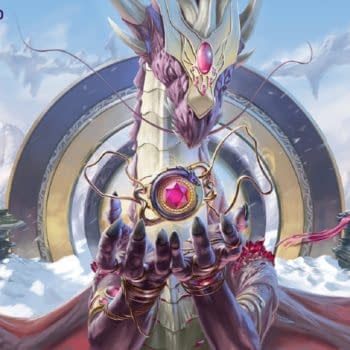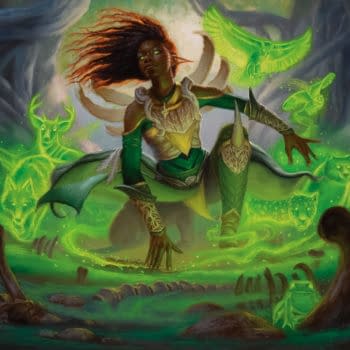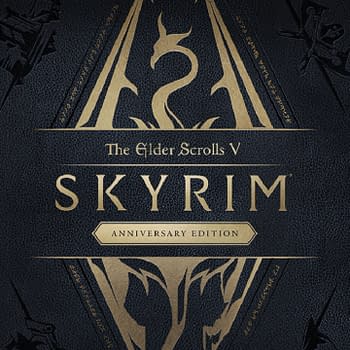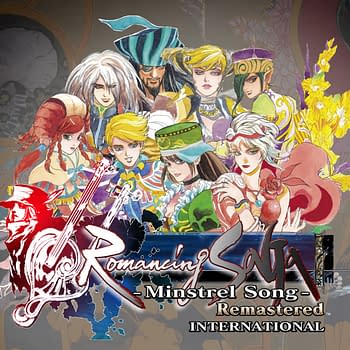Posted in: Games, Games Workshop, Miniatures, Review, Tabletop, Warhammer 40K | Tagged: Age of Sigmar, Age Of Sigmar: Warcry, AOS, Games Workshop, skirmish, Warcry, wargame, warhammer, WHFB
Review: Games Workshop's "Age Of Sigmar: Warcry"
Games Workshop has come out with a whole multitude of different wargames. From the incomparable Warhammer 40,000 to the obscure-yet-acclaimed Mordheim, it seems as though Games Workshop could exhaust their intellectual property at any second, right? It seems the answer to that question is "wrong!", because not long ago GW rebranded their fantasy wargame Warhammer into the streamlined Age of Sigmar – but what's more, Age of Sigmar has now branched into the competitively-cluttered world of skirmish games with Warcry. We at Bleeding Cool have gotten a chance to play this new skirmish game, so we can tell you what we think!
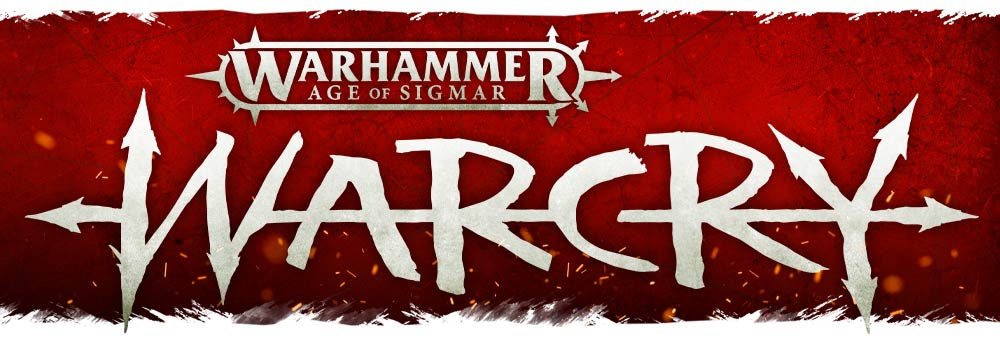
Learning Warcry
I, personally, had a chance to try out Warcry at Just Games in Rochester. I'd already had some semblance of a Warband from Age of Sigmar (personally used for the RPG campaign I currently run), so the buy-in to use my own models was merely the cost of stat cards (sold altogether, by faction). I used the Idoneth Deepkin, a race of sea-elves bent on eating the souls of those they conquer. Their style of play revolves around using their high mobility to get into combat early, use area-of-effect damage with their minor models to hurt foes, and then finish the game through killing. Their defenses are not bad either, sporting a high overall wound count and average defenses.
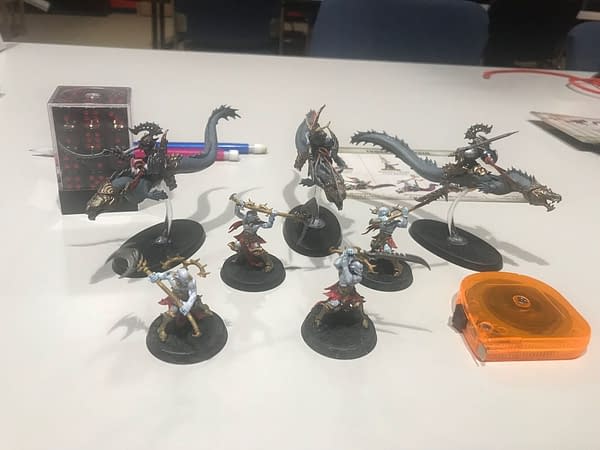
My experience with the game in initial theory crafting as such: The best thing about this game is that if you're already a seasoned Warhammer or Age of Sigmar player, Warcry has a very low initial investment. All you need to play the game is a few models with their stat cards (the game suggests warbands of 3-15 models each), a measuring tape or widget, a fair amount of standard six-sided dice, terrain, objective markers, and the rules. You would also be well-off with something to keep track of health points and model statuses.
The stat cards for the few models needed are very interesting in that they have absolutely no text except the numbers denoting stat levels. In the place of text, models' cards are endowed with Runemarks, symbols which denote abilities that can be invoked. This is a double-edged sword, in that this sort of excludes players with no knowledge of the game from merely jumping in (I had to borrow the rules from a player to get information on a specific Runemark on a model of my own), but provides an ease of understanding for players with differing learning styles. I'm all for inclusivity in gaming, so this is prolific to me.
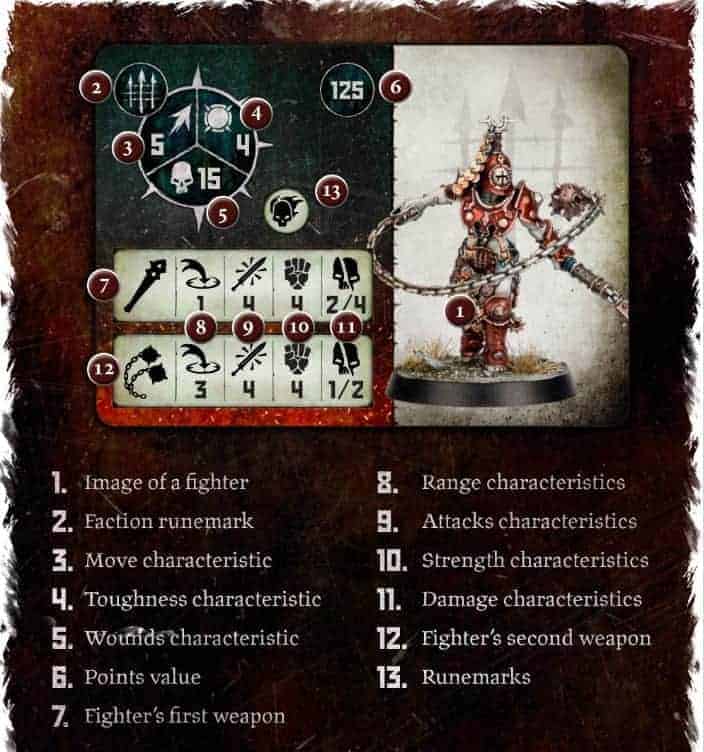
Playing Warcry
Once I went over the stat cards I had with the person designated to host the demonstration, they went over how the game actually plays. This game has a myriad of potential objectives, victory conditions, and even deployment styles, all randomized after the players have selected their warbands and put them into smaller squads. This, I felt, meant that there are even more reasons to obtain the Warcry rulebook if interested since they're all displayed within it.
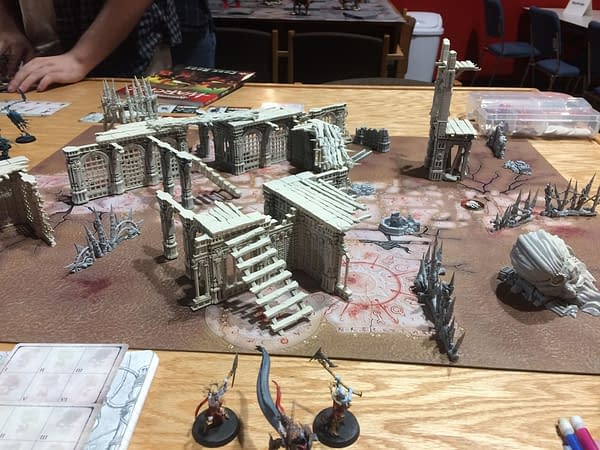
My opponent, also in his first demo of the game, used Nighthaunts, a faction of ethereal spirit hosts (if you look closely at the left of the above image you might see one or two). Nighthaunts appear to be very durable models with low wounds, but high defenses. They can also re-summon any slain Nighthaunt models. Their strategy seems to be to stay alive and maintain objectives until the game ends. The objective was to claim any of three objectives along the centerline of the board, and hold them for longer than the opposition, which, off the bat, seemed to give the grindy, attritive Nighthaunts an advantage.
This leads me to another great thing about Warcry; the games rarely take longer than three rounds of play, barring both players tying the game (there are no ties at the end, as the game continues in that case for additional rounds until a winner is called). This means that games are quick-paced and easy to finish multiples of in a night of gaming.

In the end, my original assessment, the one that said a Warband that slowly grinds down opponents would win the objective of this game, was proven wrong. The main thing that won me this demo game appeared to be calculating which squad in my Warband out of three would be deployed first (as the other two were reserved for later rounds). My opponent kept his Warband's leader in a reserve squad and noted at the end that this may have cost him the game. Meanwhile, I put my leader into the fray from the start, which put pressure on my opponent the entire game.

Final Thoughts
Overall, the game was very easy for my opponent and I to take up. The runemarks that aren't mentioned in the rulebook are easy to figure out, and the ones that are in the book have easy rules to retain as well. This made this highly-streamlined game easy to grasp, easy to play, and easy to finish. In the end, Warcry is a masterpiece that Games Workshop had best keep supporting, and one that I recommend trying out for yourself!



